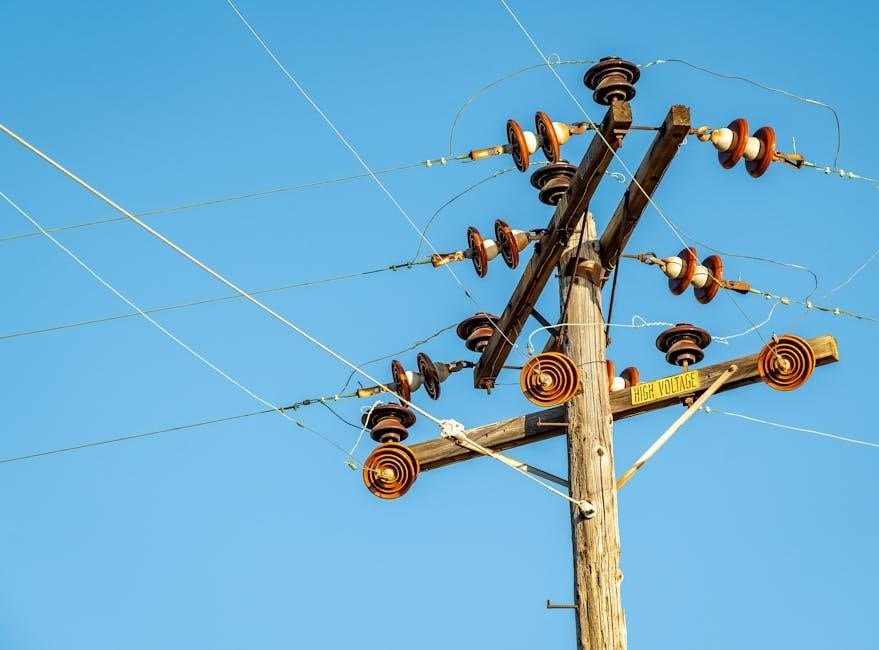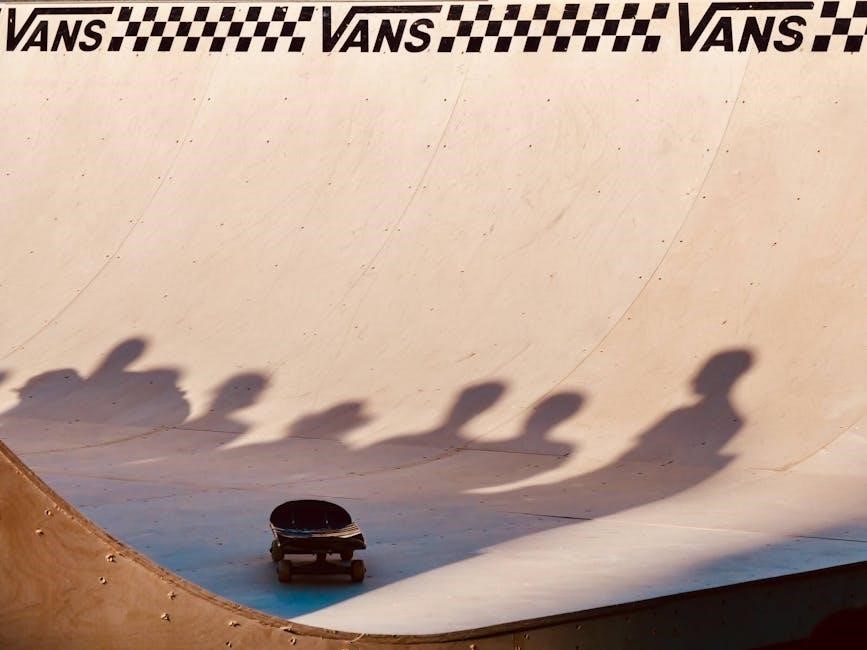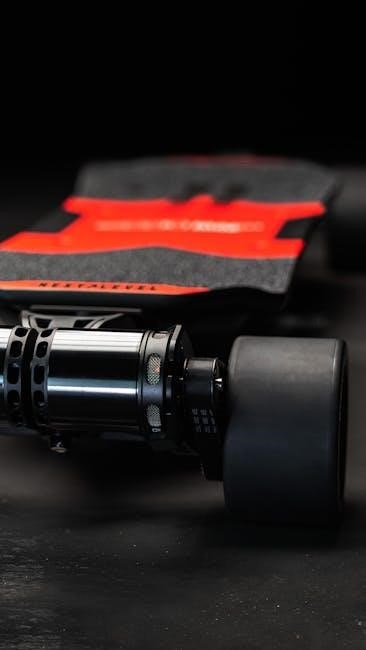An electric skateboard combines traditional design with modern technology, offering a fun, eco-friendly way to commute or enjoy recreation. Perfect for thrill-seekers and commuters alike, these boards provide a unique, versatile experience.
1.1 What is an Electric Skateboard?

An electric skateboard is a modern, eco-friendly transportation and recreational device that combines a traditional skateboard design with electric propulsion. It features a deck, wheels, and trucks, but is equipped with a motor, battery, and control system. Riders use a remote or other control methods to accelerate and brake. These boards are versatile, offering speeds from casual cruising to high-performance thrills. They are ideal for commuting, recreation, or off-road adventures, depending on the model. Electric skateboards blend portability with power, making them a popular choice for those seeking fun and efficient transportation.
1.2 Why Choose an Electric Skateboard?
Electric skateboards offer a unique combination of fun, convenience, and sustainability. They are eco-friendly, producing no emissions, and provide a cost-effective alternative to traditional transportation. With their portability and versatility, they are ideal for short commutes, recreation, or exploring new areas. Whether you’re cruising through campus or carving through trails, electric skateboards deliver an exhilarating experience. They also promote physical activity and mental well-being, making them a great choice for those seeking adventure and an active lifestyle. Their adaptability to various terrains and styles ensures there’s a model for every rider.

Key Factors to Consider When Buying an Electric Skateboard
Range, speed, deck material, wheels, and motors are crucial. Consider terrain, weight capacity, and portability. Ensure the board suits your riding style and intended use.
2.1 Range and Battery Life
Range and battery life are critical for electric skateboards. The range varies from 5 to 30 miles, depending on the battery capacity and usage. Higher-capacity batteries offer longer rides but may increase weight. Consider your daily commute distance to choose the right range. Battery types like lithium-ion are common for their reliability and safety. Charging times range from 2 to 6 hours, with some fast-charging options. A longer range often means a larger, heavier battery, so balance portability with performance needs. Always check battery longevity and maintenance requirements for optimal use.
2.2 Speed and Performance
Speed and performance are key factors for electric skateboards. Most models offer speeds between 10-30 mph, depending on motor power and gearing. Dual motors provide faster acceleration and better uphill performance. Wattage ratings (e.g., 500W, 1000W) indicate power output. Higher wattage means more speed and torque. Consider your riding style: casual cruising or high-speed adventures. Adjustable speed modes are ideal for beginners to advanced riders. Ensure the motor type suits your terrain, whether flat roads or hilly areas. Balance speed with range to avoid compromising battery life for performance.
2.3 Deck Material and Design
Deck material and design significantly impact an electric skateboard’s performance. Common materials include wood, bamboo, carbon fiber, and composite blends. Wood offers flexibility and durability, while bamboo is lightweight and eco-friendly. Carbon fiber decks are stiff for high-speed stability. Deck length and width vary, with wider decks providing better stability. Concave designs enhance foot grip and control. Grip tape texture and pattern also matter for traction. A lower deck height improves stability, while flex allows for smoother rides on rough terrain. Choose a deck that balances durability, weight, and comfort for your riding style.
2.4 Wheels and Trucks
Wheels and trucks play a crucial role in an electric skateboard’s performance. Wheel size and hardness (durometer rating) affect speed, stability, and grip. Larger wheels (70-100mm) are better for speed and rough terrain, while smaller wheels offer sharper turns. Trucks, which hold the wheels, should match the deck width for stability. Material options include aluminum, steel, or carbon fiber. Adjustable truck tightness via the kingpin and bushings allows customization for riding style. Wider trucks improve stability at high speeds, while narrower ones enhance maneuverability. Proper wheel and truck setup ensures a smooth, responsive ride.
2.5 Motors and Horsepower
Motors are the heart of an electric skateboard, determining speed and torque. Most boards use dual motors, with power measured in watts (e.g., 300W to 1200W per motor). Higher wattage means faster acceleration and better hill climbing. Horsepower ratings are less common but indicate similar performance. Single motors are more affordable but less powerful. Consider your riding terrain and needs: higher horsepower is ideal for hills or heavy riders. Check for IP ratings to ensure motor durability in wet conditions. Balanced motor power enhances stability and control during rides.
Understanding Your Needs
Assess your commute distance, recreational preferences, budget, skill level, and terrain to choose the right electric skateboard for your lifestyle and needs effectively.

3.1 Commuting vs. Recreation
When deciding on an electric skateboard, consider whether it will be used for daily commuting or recreational purposes. Commuters often prioritize range, speed, and reliability to cover long distances efficiently. Recreational riders may focus on portability, maneuverability, and fun. Assessing your primary use helps narrow down the features you need, ensuring the board meets your lifestyle demands. For commuting, durability and battery life are key, while recreation might emphasize lighter weight and ease of transport. Evaluating your usage patterns ensures the best fit for your electric skateboard.
3.2 Budget and Price Range
Your budget plays a significant role in choosing the right electric skateboard. Entry-level models typically cost between $300-$600, offering basic features suitable for casual use. Mid-range boards, priced from $600-$1,200, provide better performance, range, and durability. High-end models, ranging from $1,200-$2,500 or more, feature advanced specifications like higher speeds, longer ranges, and premium materials. Consider your needs and priorities to align your budget with the features that matter most to ensure a satisfying purchase without overspending.
3.3 Skill Level: Beginner, Intermediate, or Advanced
Your skill level significantly influences the choice of an electric skateboard. Beginners should opt for boards with stability, ease of control, and a lower speed range to build confidence. Intermediate riders can handle faster speeds and more responsive acceleration. Advanced riders often prefer high-performance models with customizable settings, higher speeds, and better maneuverability. Matching your skill level to the board’s capabilities ensures a safer and more enjoyable experience, allowing you to progress without feeling overwhelmed or limited.

Technical Specifications Explained
Understanding technical specs like battery types, motor power, and ESC (Electronic Speed Controller) is crucial for selecting the right electric skateboard. These components determine performance, range, and reliability, ensuring a smooth and efficient riding experience tailored to your needs and preferences.
4.1 Battery Types and Safety
Electric skateboards typically use lithium-ion (Li-ion) or lithium-polymer (LiPo) batteries, known for their high energy density and lightweight design. Li-ion batteries are more common due to their reliability and longer lifespan. Safety is critical, as improper battery care can lead to overheating or explosions. Look for batteries with built-in protection circuits (BMS) to prevent overcharging or short circuits. Reputable brands often use certified cells, ensuring compliance with safety standards like UL or CE. Always follow charging guidelines and avoid extreme temperatures to maintain battery health and performance.
4.2 Charging Time and Portability
Charging time varies by model, with most electric skateboards requiring 2-6 hours for a full charge. Portability is key for commuters, as lighter boards with compact designs are easier to carry. Look for skateboards with swappable batteries for extended range without waiting. High-quality chargers can reduce charging time, while built-in handles enhance portability. Always use the manufacturer’s recommended charger to ensure safety and efficiency. Longer charging times may mean larger batteries, so balance your needs between convenience and performance.
4.3 Weight Capacity and Durability
Weight capacity is crucial for safety and performance, as exceeding it can damage the board. Most electric skateboards support 200-300 pounds, depending on the model. Durability depends on materials like maple, bamboo, or carbon fiber decks, and aluminum trucks. Wheels with higher durometer ratings are more durable but less flexible. Look for boards built with high-quality components to ensure longevity. Regular maintenance, like tightening trucks and inspecting wheels, also enhances durability. Choose a board that matches your weight and riding style for optimal performance and lifespan.

Safety Features
Safety features are essential for a secure riding experience, ensuring control and minimizing risks. They enhance stability, provide reliable braking, and protect against potential hazards or accidents effectively.
5;1 Braking Systems
Braking systems are crucial for safe and controlled electric skateboarding. Reliable brakes ensure smooth stops, preventing accidents. Most boards feature regenerative, disc, or foot-activated brakes. Regenerative brakes recharge the battery but may lack power in wet conditions. Disc brakes offer strong stopping force but add weight. Foot brakes are simple yet require practice. Look for systems with adjustable sensitivity and consistent performance. Dual braking mechanisms enhance safety by providing backup options. Always test brakes before riding to ensure functionality and responsiveness, especially in varying terrain and weather conditions.
5.2 Stability and Balance
Stability and balance are essential for a smooth and confident ride. A wider deck offers better balance, while a lower center of gravity improves stability at higher speeds. Flexibility in the deck can enhance carving but may compromise stability for beginners. Larger wheels provide better stability on rough terrain, while softer wheels absorb shocks. Wider trucks also contribute to stability, especially at speed. Consider your weight distribution and riding style to maintain control. Adjustable settings can help tailor the board’s stability to your skill level and preferences.
5.3 Protective Gear Recommendations
Safety should never be compromised when riding an electric skateboard. Always wear a high-quality helmet that fits securely to protect your head in case of a fall. Knee pads and elbow pads are essential for shielding joints from impact. Wrist guards can prevent injuries from wrist fractures. Consider additional gear like skateboarding shoes for better grip and goggles for eye protection. Reflective clothing or accessories can enhance visibility, especially at night. Remember, protective gear is crucial for both beginners and experienced riders to ensure a safe and enjoyable experience.

Brand and Manufacturer Considerations
Choosing a reputable brand ensures reliability, quality, and durability. Reputable manufacturers offer better performance, safety, and customer support, making your investment worthwhile.
6.1 Reputable Brands in the Market
When selecting an electric skateboard, opting for a well-known brand like Boosted, Evolve, or TeamGinger ensures quality and reliability. These brands are renowned for their innovative designs, durability, and performance. They often use high-grade materials and advanced technology, providing a smoother and safer riding experience. Additionally, reputable brands typically offer better customer support and warranties, giving buyers peace of mind. Researching these brands and their models can help you find the best fit for your needs and preferences. Their reputation is built on trust and customer satisfaction.
6.2 Customer Support and Warranty
Reputable brands often provide excellent customer support and comprehensive warranties, ensuring peace of mind for buyers. Look for brands that offer responsive customer service, detailed product support, and clear warranty terms. Warranties typically cover the electric skateboard for 6 months to 2 years, depending on the brand and model. A good warranty should address issues like battery degradation, motor defects, and other critical components. Reliable customer support can also help with troubleshooting, repairs, and replacements, making your ownership experience smoother and more enjoyable over time.

6.3 User Reviews and Ratings
Reading user reviews and ratings is crucial when choosing an electric skateboard. They provide real-world insights into performance, durability, and customer satisfaction. Look for reviews from verified buyers who highlight specific features like speed, battery life, and build quality; Pay attention to common praises or complaints to identify trends. Additionally, check multiple sources, such as forums, social media, and review websites, to get a balanced perspective. While individual experiences may vary, consistent feedback can help you make a more informed decision and avoid potential pitfalls.
Maintenance and Upkeep

Regular cleaning prevents damage, while storing in a cool, dry place maintains battery health. Check wear and tear on wheels and bearings, replacing them as needed. Lubricate moving parts to ensure smooth operation.
7.1 Cleaning and Storage Tips
Regularly clean your electric skateboard with a soft cloth and water to remove dirt and debris. Avoid harsh chemicals or high-pressure washes, as they can damage components. Store your board in a cool, dry place away from direct sunlight and moisture. Keep the battery charged to at least 50% when storing for extended periods to maintain its health. Always check for wear and tear before storing. Use a protective case to prevent scratches and damage during storage.
7.2 Replacing Parts: Wheels, Bearings, and Belts
Regularly inspect and replace worn-out wheels, bearings, and belts to maintain your electric skateboard’s performance. Wheels should be replaced when they show significant wear or unevenness. Bearings may need replacement if they cause friction or noise. Belts should be replaced when they become cracked or slip during use. Use compatible parts and tools, such as a T-tool for wheel removal, to ensure proper installation. Always consult your manual for specific instructions and recommendations to keep your board running smoothly and safely.
7.3 Battery Maintenance for Longevity
To extend the life of your electric skateboard’s battery, avoid overcharging and extreme temperatures. Store the battery in a cool, dry place when not in use. Avoid letting it drain completely, as this can strain the cells. Clean the battery contacts regularly to ensure proper connection. Use the original charger to prevent damage from incompatible charging systems. Update your board’s firmware periodically, as it may include battery optimization features. Proper care will help maintain your battery’s health and performance over time.
Accessories and Customization
Enhance your electric skateboard experience with essential accessories like helmets, knee pads, and decals. Customize your board with LED lights, colorful wheels, or upgraded components for improved style and performance.
8.1 Essential Accessories: Helmets, Knee Pads, etc.
Protect yourself with a high-quality helmet, knee pads, and elbow pads, as safety is paramount. Gloves improve grip and control while riding. Additional accessories like extra wheels, bearings, and a carrying bag can enhance convenience. Consider reflective gear for visibility and a skateboard tool for minor adjustments. Always ensure your accessories are compatible with your board’s specifications and replace worn-out parts regularly for optimal performance and safety.
8.2 Customizing Your Electric Skateboard
Customizing your electric skateboard allows you to tailor it to your style and preferences. Start with the deck, choosing designs or graphics that reflect your personality. Upgrade wheels for better grip or speed, and adjust trucks for tighter or looser turns. Adding LED lights or decals can enhance visibility and aesthetics. Tech upgrades, such as remotes or app connectivity, can also be installed. Ensure compatibility when modifying parts and consult user manuals or forums for guidance to avoid voiding warranties.
8.3 Upgrading Components for Better Performance

Upgrading your electric skateboard’s components can significantly enhance its performance and versatility. Consider replacing the motors or ESC (Electronic Speed Controller) for smoother acceleration and higher speeds. Swapping to a higher-capacity battery can extend range and power; Upgrading wheels to larger or softer ones improves stability and traction, while high-rebound wheels offer a smoother ride. Bearings with higher ABEC ratings can increase speed and reduce friction. These upgrades allow you to tailor your board for off-road adventures, steep hills, or daily commuting, ensuring it meets your evolving needs and riding style.
Legal and Regulatory Considerations
Understand local laws regarding electric skateboard use, age restrictions, and required safety gear. Ensure compliance with road rules and insurance requirements to avoid legal issues while riding.
9.1 Laws and Regulations in Your Area
Understanding local laws governing electric skateboards is crucial. Regulations vary by region, dictating where they can be used, age restrictions, speed limits, and required safety gear. Ensure compliance to avoid penalties like fines or confiscation. Check with your local transportation authority for specific guidelines to ensure safe and lawful use, and stay informed about any legislative changes that may affect your riding privileges and safety.
9.2 Insurance and Liability
Insurance and liability considerations are essential when owning an electric skateboard. While not always mandatory, having insurance can protect against accidents, damages, or injuries. Liability coverage is crucial, as riders may be held responsible for collisions or property damage. Check local insurance options tailored for electric skateboards, and understand your liability in case of an accident. Some policies may cover theft or damage, offering peace of mind. Research thoroughly to ensure adequate coverage and comply with legal requirements in your area.
9.3 Road Safety and Etiquette
Practicing road safety and etiquette is vital for electric skateboard users. Always follow traffic rules, wear protective gear, and stay alert to your surroundings. Yield to pedestrians and cyclists, and avoid riding on sidewalks where prohibited. Be mindful of your speed in crowded areas and use hand signals for turns. Respect other road users, such as cars and bicycles, to ensure a harmonious sharing of public spaces. Good etiquette fosters a positive reputation for electric skateboard users and enhances overall safety for everyone.
Making an informed decision ensures a satisfying electric skateboarding experience. Assess your needs, research thoroughly, and test options when possible. Enjoy the ride responsibly and safely!
10.1 Making the Right Purchase Decision
Align your purchase with your specific needs and preferences. Consider commuting, recreation, or a mix, and evaluate factors like range, speed, and deck design. Budget plays a key role, so set a price range and stick to it. Skill level is crucial—beginners may prefer stability, while advanced riders might seek high performance. Research reputable brands, read user reviews, and compare models. Ensure the board’s weight capacity matches your needs. Test ride if possible to confirm comfort and performance. A well-informed decision ensures satisfaction and a great electric skateboarding experience.
10.2 Enjoying Your Electric Skateboarding Experience
To fully enjoy your electric skateboard, start with short rides in open spaces to build confidence. Practice braking and accelerating smoothly. Always wear safety gear, including a helmet and knee pads. Explore new routes and connect with local skating communities. Regularly maintain your board to ensure optimal performance. Be mindful of your surroundings and local regulations. Embrace the thrill of gliding effortlessly while enjoying the freedom and fun of electric skateboarding. Make every ride a memorable and safe adventure!
